Salesforce Business Units empower brands
Salesforce Business Units are an organisation settings functionality that allow companies to manage their brands, marketing structure and processes within Salesforce Marketing Cloud.
Do you like fractals? The beauty of nature where the smallest objects reflect the structure and shape of huge ones. Why not implement this idea in your marketing structure?
Salesforce Business Units in action
One brand – many companies
Think about a global car company. The global brand office defines branding, creates the brand guidelines and defines the communication policy. In the system all digital assets are provided globally for users to access and compose their marketing materials.
Each country in this fictitious company then has its own Business Unit in Salesforce Marketing Cloud where they define customer journeys and email templates in their local language, to be used by the dealers. All data workflows, GDPR rules and databases are maintained at this level. Finally, each car dealer has its own Business Unit to build personal relationships with their customers, inviting them to local events, sales or open days. Dealers only have access to their own clients in the database and they can use templates and workflows prepared by the country office, using digital assets provided by the global brand.
One company – many brands
To look at another example where Business Units may prove beneficial. Let’s say you are running a retail company, managing several brands which position products to the same database. KPI’s, goals and marketing policy are defined at the company level, as well as database maintenance and regulations, while marketing communications are managed by each brand separately. Some workflows and marketing processes are managed centrally. Assets and products are created within brand-focused teams but KPI’s are reported centrally.
Global – local
Like fractals, Business Units can reflect the structure of the bigger objects. Database structure, marketing policy, creative content and workflows once established at the global level can be replicated in local entities with the possibility of access management for each user or group of users. This solution helps companies to keep clear and coherent branding and save time at an operational level.
Business Units can mirror your structure and help organisations to manage their conversations with customers while keeping tight reigns on customer data, confidential business information and strategies.
Implementing Salesforce Business Units
Implementation of the Business Units structure requires several decisions.
- Structure – what is defined as a Business Unit?
- Access to data.
- Access to assets, templates, workflows.
- Users permissions.
These decisions should ideally be supported by consultation from an outside point of view who will listen to your company’s needs and goals, and be able to advise the optimal solution.
It is also helpful to look at the process from two different perspectives:
The centralised marketing perspective
The global team creates strategy, marketing rules, branding and templates and allows local entities to customize their communication with their customers.
The local marketing perspective
A franchise owner or regional team is supported in communicating with their customers – all design and dataflows are provided for them. They can customise messages for their customers inviting them to events or the like and focus more on building their business.
Contact us for assistance with planning around the implementation or optimisation of Salesforce Business Units.
Like what you see?
Subscribe to our newsletter for customer experience thought leadership and marketing tips and tricks.




